Asia-Pacific
A terrifying fire struck Maui in 2018; officials were warned of a repeat
The Washington Post August 23, 2023
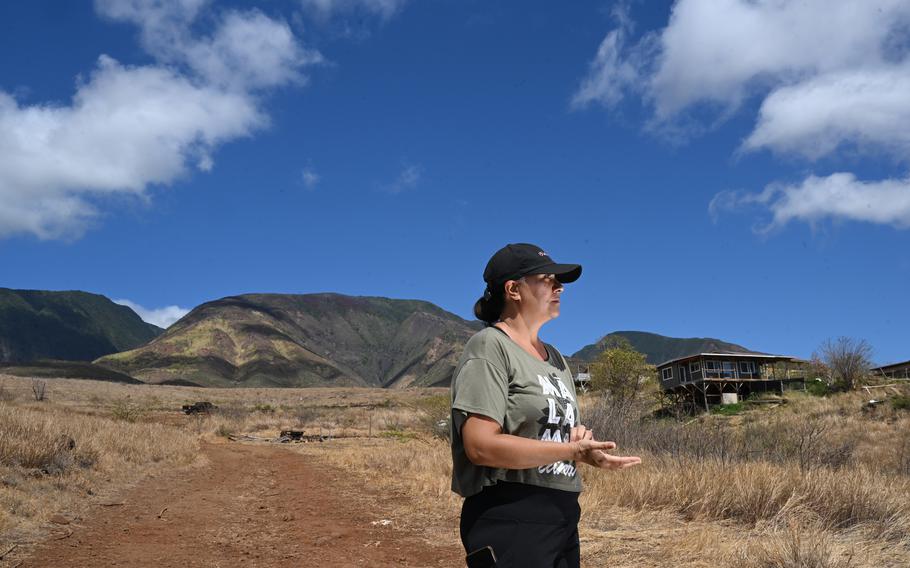
Samantha Dizon lost everything in the West Maui fires of 2018. Five years later, her community faced the deadliest U.S. wildfire in a century, leaving Dizon and others in the Lahaina area to question why more changes were not made to emergency response efforts in the meantime. (Matt McClain/The Washington Post)
KAUA'ULA VALLEY, Hawaii — Burning homes have a specific kind of plastic smell, one Samantha and David Dizon know too well. So when it wafted through their windows on Aug. 8, they froze. Running outside, they saw the plumes of smoke coming from Lahaina and heard propane tanks exploding in the distance. They knew what was unfolding, because nearly five years ago, the same thing had happened to them.
Around 11 p.m. on Aug. 24, 2018, something ignited in the dry, grassy hills behind their home in the Kaua'ula Valley, a West Maui community uphill from Lahaina. Howling winds from a passing hurricane helped feed that spark, sending what the Dizons called a "wall of fire" toward their unincorporated village, where about 50 Native Hawaiian people live on ancestral (known as Kuleana) land that has been in their families for centuries.
They barely got out. In the chaos, David's mother, Yolanda Dizon, fell, and flames licked her arms and legs. Trying to help his grandmother, David's teenage son also sustained third-degree burns. Yolanda's puppy got left in a car, and David heard her yelping as she burned to death. Firefighters showed up but couldn't handle the terrain. Over the next 24 hours, crews would battle three blazes at the same time.
No one died, but if the winds had been stronger that day, officials said, the ultimate toll could have been far worse. Even so, the West Maui fires of 2018 torched 21 houses, 27 cars and more than 2,100 acres, causing $4.3 million in damage and displacing a few dozen people, including the Dizons, who lived in a shelter for a year and a half while they rebuilt. In terms of homes lost, it was the most destructive wildfire in state history — until now.
Five years apart, the two disasters eerily parallel one other. Both times, in August, hurricane-fueled winds pounded West Maui. Both times, they helped to ignite what would become multiple fires in overgrown, drought-stricken hills. The first time, the lack of warnings and chaotic evacuations spurred residents to question their leaders' response, preparation and transparency. The second time, some of the same problems repeated themselves.
A heated town hall on Aug. 29, 2018 — recorded on Facebook — captures the raw emotions five years ago. For three hours, angry and emotional residents peppered Mayor Alan Arakawa and other state and county officials with questions: Why didn't Maui Electric shut off the power given the high winds and their equipment having caused other fires? Why didn't emergency staff sound their all-hazard sirens? Why did firefighters lose water? Why was there not an evacuation plan? Why did their cellphones not get alerts? Why, after the fire, did the county not quickly provide the displaced with assistance, instead forcing their community to fill the gap?
Now, in the aftermath of the deadliest U.S. wildfire in a century, people in the Lahaina area are again asking the same questions, further challenging recent statements made by county and state officials that "nobody saw this coming," that "this has never happened before."
"We were begging to be taken seriously, but our voices weren't being heard," Samantha Dizon said. "2018 should have been a wake-up call. But nothing was done here."
Despite promising they would take action, Maui County leaders did not make wildfires a priority after 2018, a Washington Post investigation has found, even though their hazard plan stated that "West Maui has experienced more wildfires than any other community planning area over the last 20 years."
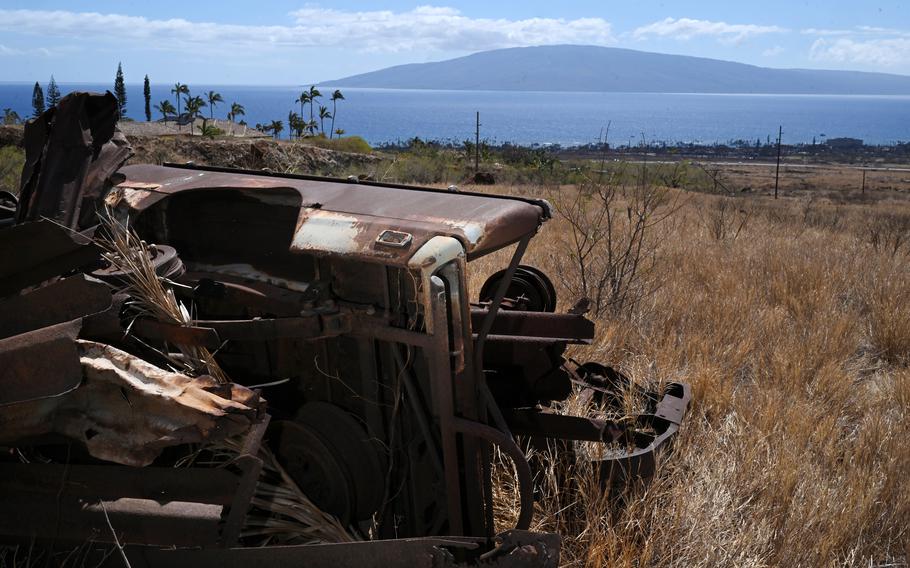
Vehicles from the 2018 fires sit on Samantha Dizon’s property in Lahaina this month. The 2018 fires were driven by high winds, similar to this month’s fire. (Matt McClain/The Washington Post)
The Post investigation — a review of hundreds of pages of county documents and interviews with more than a dozen people, including current and former county and state employees — found that Maui Emergency Management Agency officials regularly warned county leaders that their staffing and evacuation infrastructure was inadequate to respond to a major disaster. However, even with a budget boost, the county only increased agency staffing from seven to nine employees between fiscal years 2020 and 2021.
The agency's administrator, Herman Andaya, also did not act on recommendations by residents and others that the county broaden its outdoor warning sirens to include wildfires. At county meetings, he called the system a "last resort." Emergency officials again did not activate those sirens on Aug. 8 to alert Lahaina residents of the approaching fire, a decision Andaya repeatedly defended before he resigned last week.
The agency also never published its internal after-action report on the 2018 fires, which should have included findings on what went wrong and recommendations for improvements, according to a former county official, who spoke on the condition of anonymity to speak freely about the matter.
In addition, the county did not broadly or swiftly act on calls by residents, as well as reports commissioned by the community, to improve fire safety. At least two called for homeowners and private landowners to remove dangerous vegetation on their properties and create defensible spaces and fire breaks.
West Maui groups and activists had been "begging and begging and begging" for disaster planning, including more emergency management funds and more fire stations, said Joseph Pluta, the head of the West Maui Taxpayers Association. In September 2018, the nonprofit created a draft plan to better prepare the area for disasters, using a state-provided template for residents. Pluta said the county declined to participate, so the plan never went anywhere.
Back then, he said, he complained to the mayor and emergency management agency that they were minimizing the potential threats. In his view, there has been little political will to prioritize emergency planning.
The hazard plan was still sitting untouched, in draft form, on Aug. 8, when Pluta awoke choking on thick, black smoke. He survived by only a minute or two, he believes, by jumping out his window. When he looked up from the ground, he saw his Lahaina home and his neighbors' on fire.
"Everything that we told them was true," he said. "They didn't pay attention to our warnings. They didn't do what we asked them to do and minimized it, and now people are dead because of it."
Asked about the concerns of Pluta, the Dizons and other residents, Maui county officials did not respond to telephone messages or emails. Former mayor Arakawa also could not be reached. In previous statements, Maui officials have said their priorities now are helping fire victims recover, assisting in the search for missing loved ones and restoring services, such as drinking water.
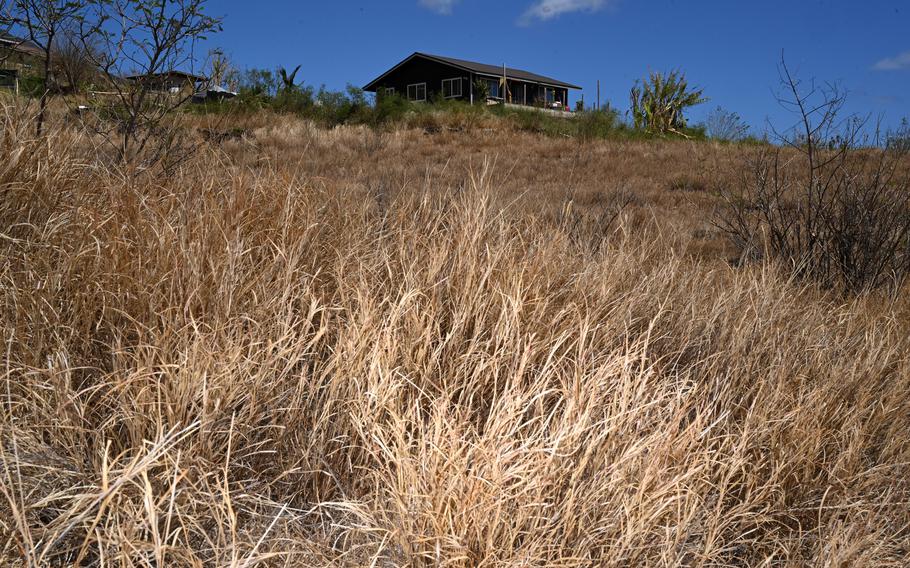
Samantha Dizon’s home. She says that after the 2018 fire, she felt county officials were “sweeping it under the rug.” (Matt McClain/The Washington Post)
Little focus on fire threats
During fiscal 2023, Maui County designated $1.1 million for emergency management — nearly 85% of which came from grants — out of a general fund budget of $1.07 billion.
While some Maui residents have criticized the county for not investing more in emergency management, it is well-known that such planning departments are underfunded nationwide. Many have just one employee. Local governments have also long struggled to fund and launch large-scale infrastructure projects and update building codes to keep people safe, the former county official said.
The county's small emergency response agency had issues beyond obtaining requested funding. The coronavirus pandemic forced the agency to redirect time and already stretched resources into the public health response.
As for the broken and empty fire hydrants that hampered the firefighting response in 2018 and 2023, a spokesperson for the Maui Fire Department said the county water districts are responsible for making sure water flows to those hydrants and the equipment is functioning. Maui's water is a complicated, hot-button issue, and crews are just the "the end users" of it, the spokesperson said. Water district officials could not immediately be reached.
Hawaiian counties such as Maui take their leads from the state and depend on it for funding and direction, according to the former county official and a former state emergency official, who also requested anonymity to speak freely.
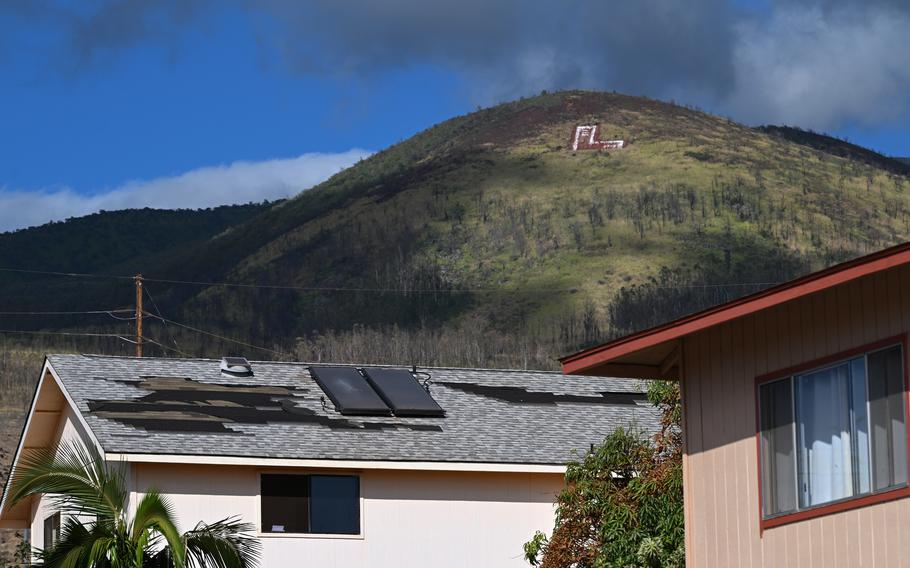
Shingles are missing from a roof in Lahaina after the wildfires that started Aug. 8. (Matt McClain/The Washington Post)
While Hawaii is highly concerned about climate change, it largely focuses on sea level rise, flooding and hurricanes. Its five-year strategic plan, updated in 2022, only mentions "wildfire" twice, compared with 13 references to "hurricane." And though Maui has a thorough wildfire section in its 2020 hazard mitigation plan, which stated that the entire county was "at risk" because of climate change, it didn't prompt robust preventive work.
The Dizons, meanwhile, never achieved closure over the fire that almost killed them.
Yolanda Dizon, who was hospitalized for burns on her legs, arms and back, pushed for a probe of how the blazes started. In December 2019, the Maui Fire Department reported the findings as "inconclusive." While there were power and high-voltage energy lines in the vicinity of where two different blazes started, the chief investigator said: "At this time, I am unable to rule out the power lines as a possible ignition source." He was also "unable to rule out that this fire was intentionally set."
It felt like they were "sweeping it under the rug," Samantha Dizon said, so Yolanda kept showing up and speaking about the fire at county meetings until she died this past May.
"She knew something terrible was going to happen," Samantha said of her late mother-in-law. "And that we were not ready for it."
'You abandoned us'
Five days after the Kaua'ula Valley fire, Arakawa stood in the Lahaina High School cafeteria — flanked by officials from the county, state, electrical company and police and fire departments — and addressed the packed room. The previous week, he said, had been one of the most traumatic ones he'd ever experienced.
Listening now to what he said then is chilling, Samantha Dizon said.
"We had three fires while watching for a hurricane. We could have had a lot of deaths," Arakawa told survivors, including the Dizons. "We could have lost a lot of Lahaina and our tourist area, but instead, we didn't."
The meeting quickly turned tense. For three hours, residents, including David Dizon, took the microphone and shared their grief and anger over a lack of warning, communication and post-disaster response: "You abandoned us." "Where were you?"
"You failed us," Dizon told officials, and it wasn't the first time, he noted. The community had faced close calls with fires in 2007 and 2012, and this time, his neighbors, the Palakikos, also endured a harrowing experience.
That night, Daniel Kuulei Palakiko and his wife, Jaime, sprinted to wake up 30 members of their family as large embers landed in the coconut trees around their five homes. They quickly began to battle the fire on their own, cutting fire breaks and soaking the wooden structures. Fire crews could not make it to them, and hydrants ran of water. The last of their five homes went up in flames around 5 a.m.
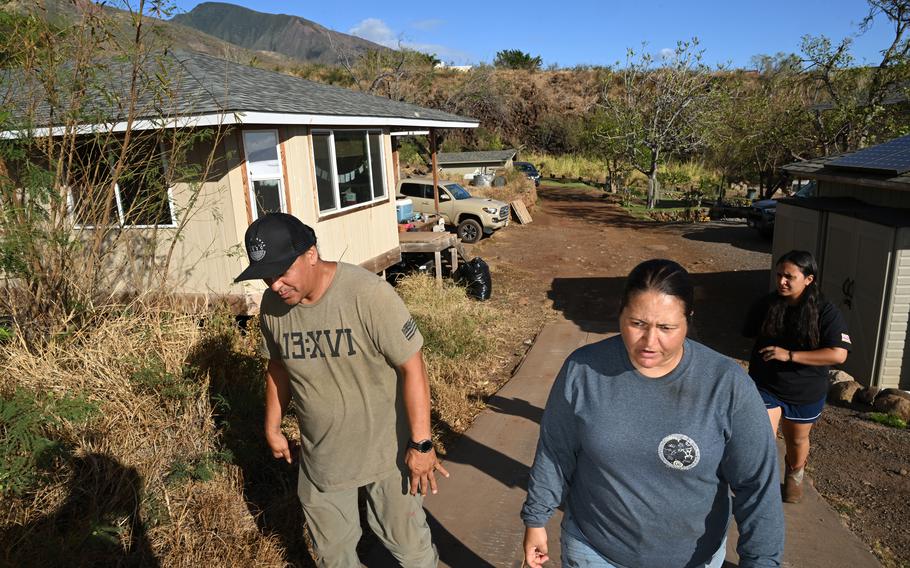
Daniel Kuulei Palakiko, Jaime Palakiko and their daughter Hi’ialo Palakiko walk through their family’s property. (Matt McClain/The Washington Post)
Commending them for their hard work, the fire chief confirmed that there had been a "break" with the hydrant. "I can't tell you exactly why. We will follow up and see from our side and make sure we will have fire protections in place."
Next: Why didn't officials blare their sirens?
Andaya, the head of the agency, sat silently, so another emergency staffer took the mic: "Currently we don't have a protocol for sounding sirens for fires, but it doesn't mean it isn't something we can look at."
Residents grew angry. "Just do it," they yelled.
And even back then, people had questions for and concerns about Maui Electric, which is part of Hawaiian Electric — whose equipment is strongly suspected of causing the most recent Lahaina fire. According to residents in the 2018 meeting, the company was responsible for other blazes as well.
"If the winds exceed a certain amount, is Maui Electric required to shut down?" one person asked. "Those wires were whipping up there. And that was the cause of the fire."
"That was not a conversation that was had," an emergency response official replied, asking the utility's director of government and community relations to weigh in. At the time, that person was Mahina Martin, who is now the chief of communications and public affairs for Maui County and has been helping lead the response to the 2023 fires.
Martin confirmed that the utility did not have a protocol to shut down power ahead of high winds. They still do not, as The Post first reported.
There was, according to one resident, an electrical incident before the 2018 fire started. He then pressed the utility and fire chief for statistics about how many fires were the result of problems with power lines or distribution transformers. The chief replied that he did not have that information, but told him to submit the question in writing.
The 2018 fire galvanized Lahaina and Kaua'ula Valley residents to take action themselves. The Palakikos said they spent hundreds of dollars on water tanks and hoses, and got trained on how to use them.
Others showed up at meeting after county meeting, year after year, asking for better radios, evacuation plans and more emergency management staff:
• "We all know West Maui is natural, is one natural disaster away from being isolated. 30,000 people with no access to critical care, sufficient supplies. … But, as most things, once the natural disaster has passed, the urgency goes away and we move on to other things …" a resident told a committee in September 2018.
• "… there was not a lot of communications inside the town itself because all the cellphone towers were out. They didn't put the emergency sirens on. There were a lot of things. A lot of people didn't know what was going on. So it would be very helpful if there was a lot of planning …" another resident told commissioners in April 2019.
• "What did you do right? What did you do wrong? What you going to do different next time so we don't have to have all these terrible things that happen?" Pluta told the Maui Emergency Management Agency in April 2019.
Struggling to 'move on'
After Samantha Dizon lost everything in 2018, she said it felt like the county wanted her and her community to move on, and she did, in some ways.
Now every day is like déjà vu, but worse. Most of the historic town that helped her family rebuild is gone, including the homeless resource center where they lived for so long. Many of the people who fed and clothed her have now lost their homes, and she's the one organizing supplies for them. That's especially hard, because she knows what they are in for, what the trauma can do.
And then there are the dozens and dozens of burials still to come. Just recently, the Palakikos said they learned an older cousin, Jerry Junior Nuesca, died alone in his Lahaina home. They're still waiting to find out whether he burned or choked to death.
"You don't move on," from something like this, Samantha Dizon said. Because when you witness and escape a fire like she did, every whiff of smoke brings you right back to that smothering, burning air, to the panic and the chilling thoughts that you won't ever get out of it, to the sounds you wish you'd never heard.
Sacks reported from Lahaina, Hawaii, and McDaniel reported from Washington. Elahe Izadi in Washington contributed to this report.
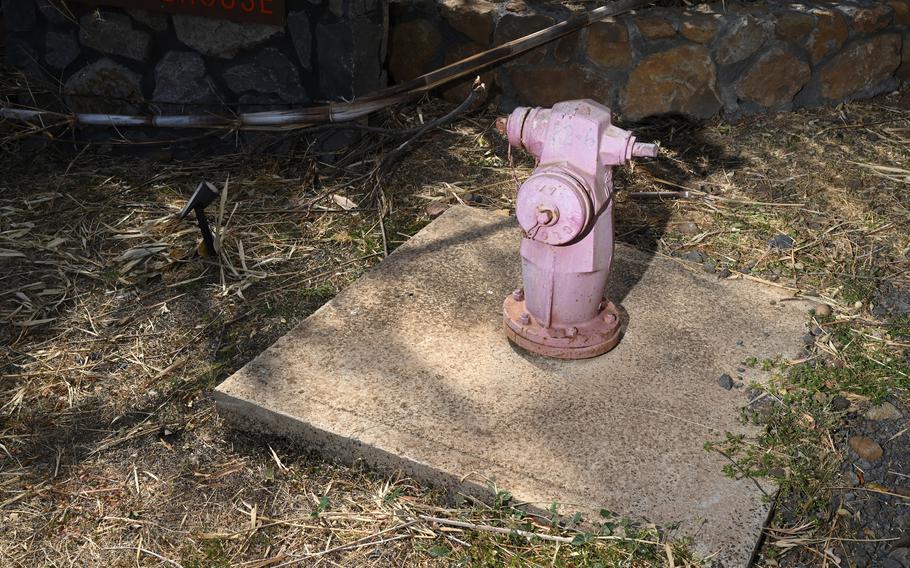
Empty fire hydrants hampered the wildfire response in 2018 and 2023. (Matt McClain/The Washington Post)